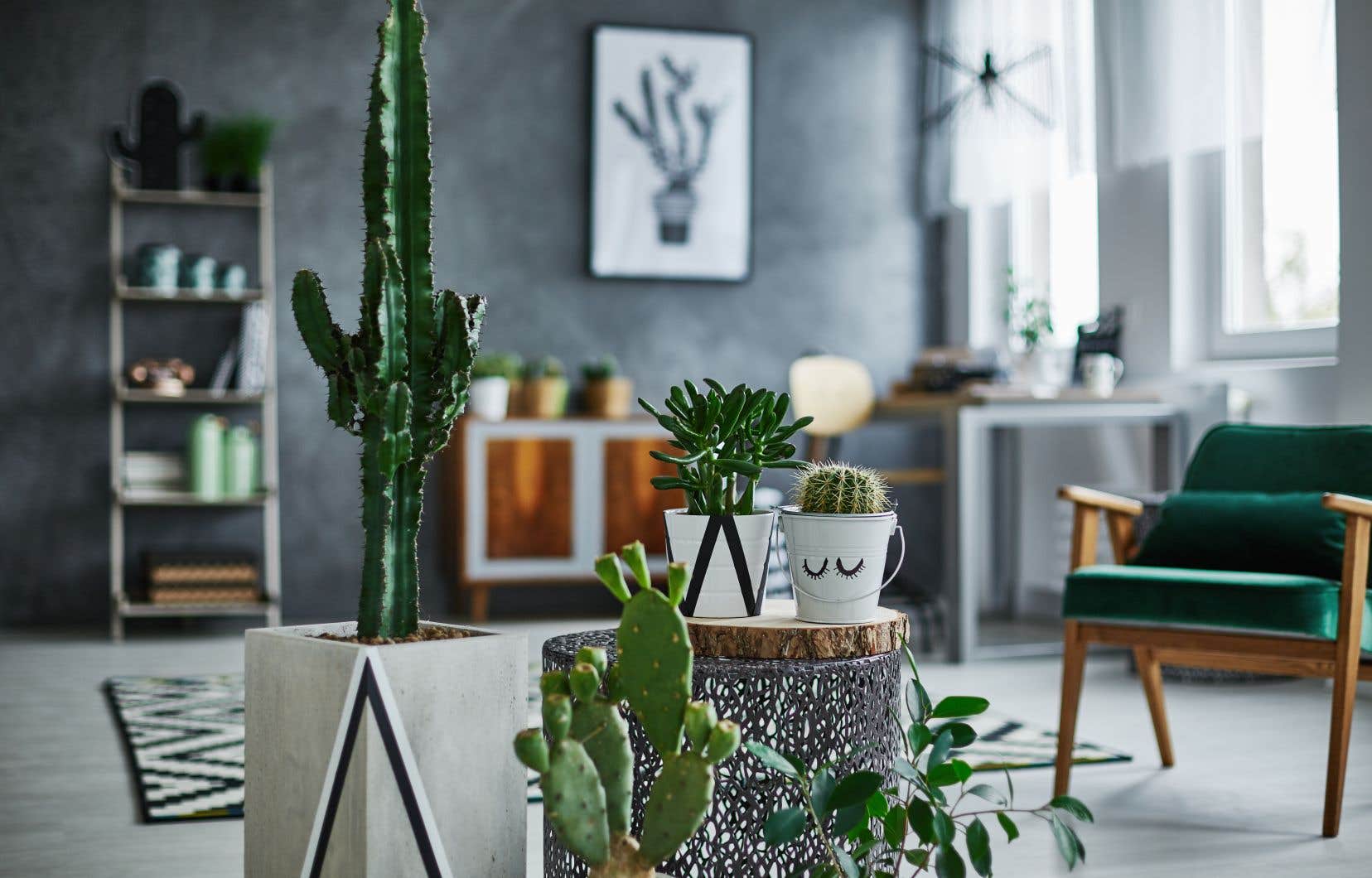This text is part of the special Pleasures notebook
Cacti, these plants which have transformed their leaves into thorns to defend themselves against the heat, are increasingly attractive with their diverse and spectacular shapes. Whether small or imposing, slender or plump, straight, sinuous, curved or drooping, these plants add a touch of spice to the atmosphere… inside as well as in the garden!
Cacti bring a subtle note of greenery and desert that harmonizes with all styles, making them decorative plants par excellence. For captivating compositions, combine cacti with agaves, aloes, VSrassulaecheveries, Haworthiamangaves, Portulacariasedums, Sempervivum, groundsels, and several others. Play with colors, shapes and textures to form visually interesting arrangements. However, refrain from associating them with tropical plants that love humidity, they would not like it at all.
When summer arrives, take advantage of the outdoors to display your cacti, which will do better. However, it is imperative to first carry out an acclimatization phase. When you decide to move them outside, start by positioning them in the shade before gradually moving them into the sun, spreading this transition over a few weeks to avoid the risk of sunburn.
For all tastes
Whether small or imposing, slender or round, cacti are distinguished by their original look. Here are eight eloquent examples:
The Cereus
Also known as candle cacti, they evoke the landscape of old westerns with their slender appearance. They are perfect for creating height on your terrace in summer.
Echinocacti
Among these, the “mother-in-law cushion” (Echinocactus grusonii) has a globular shape covered with sharp spines. These rounded cacti fit perfectly into outdoor potted gardens during the summer season.
The Opuntia
Recognizable by their racket or rabbit ear shape, they take on a reddish tint in direct sunlight. L’Opuntia humifusa, the only perennial cactus in Quebec in hardiness zone 4, can be planted directly in the ground without special protection. It also produces cactus pears.
Cephalocereus
This genus includes, among others, the old man’s head cactus (Cephalocereus senilis). THE Cephalocereus hide their spines under a fleece and tend to thicken in the sun.
The mamillaries
The mammillaries are distinguished by their very varied shapes. THE Mammillaria elongata cristata notably resembles a brain.
The Gymnocalycium
With its curved spines reminiscent of spiders, this species includes grafted cacti in various colors.
Orchid cacti, Christmas cacti and Rhipsalis
These are epiphytic cacti with often impressive flowering which grow naturally on trunks, branches or any other support. Some, like the Rhipsalis salicornioidesare devoid of thorns and adapt well when hung in a well-lit place.
Agaves and echeveria
Just like other succulents, they store water and nutrients to survive periods of drought. It is therefore essential to use well-draining soils and avoid the accumulation of water around the roots. Their best companion remains the sun or bright light.
This content was produced by the Special Publications team at Duty, relating to marketing. The writing of the Duty did not take part.
